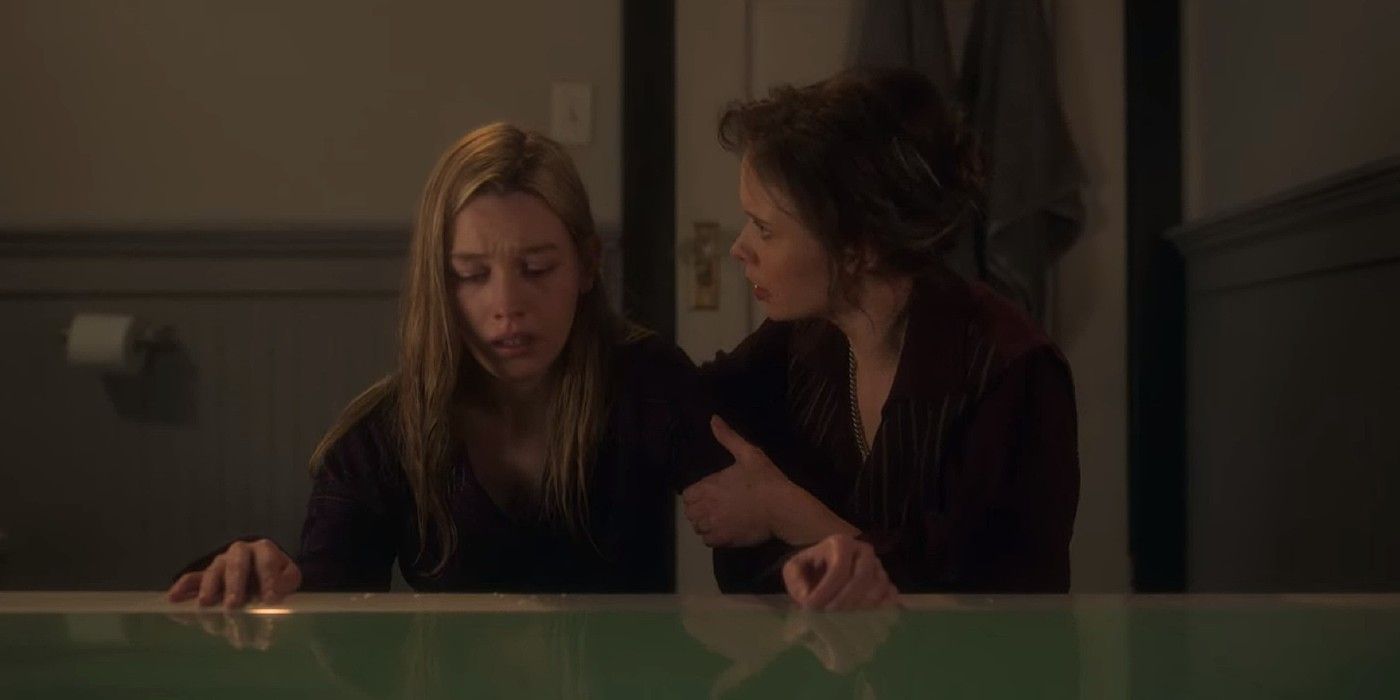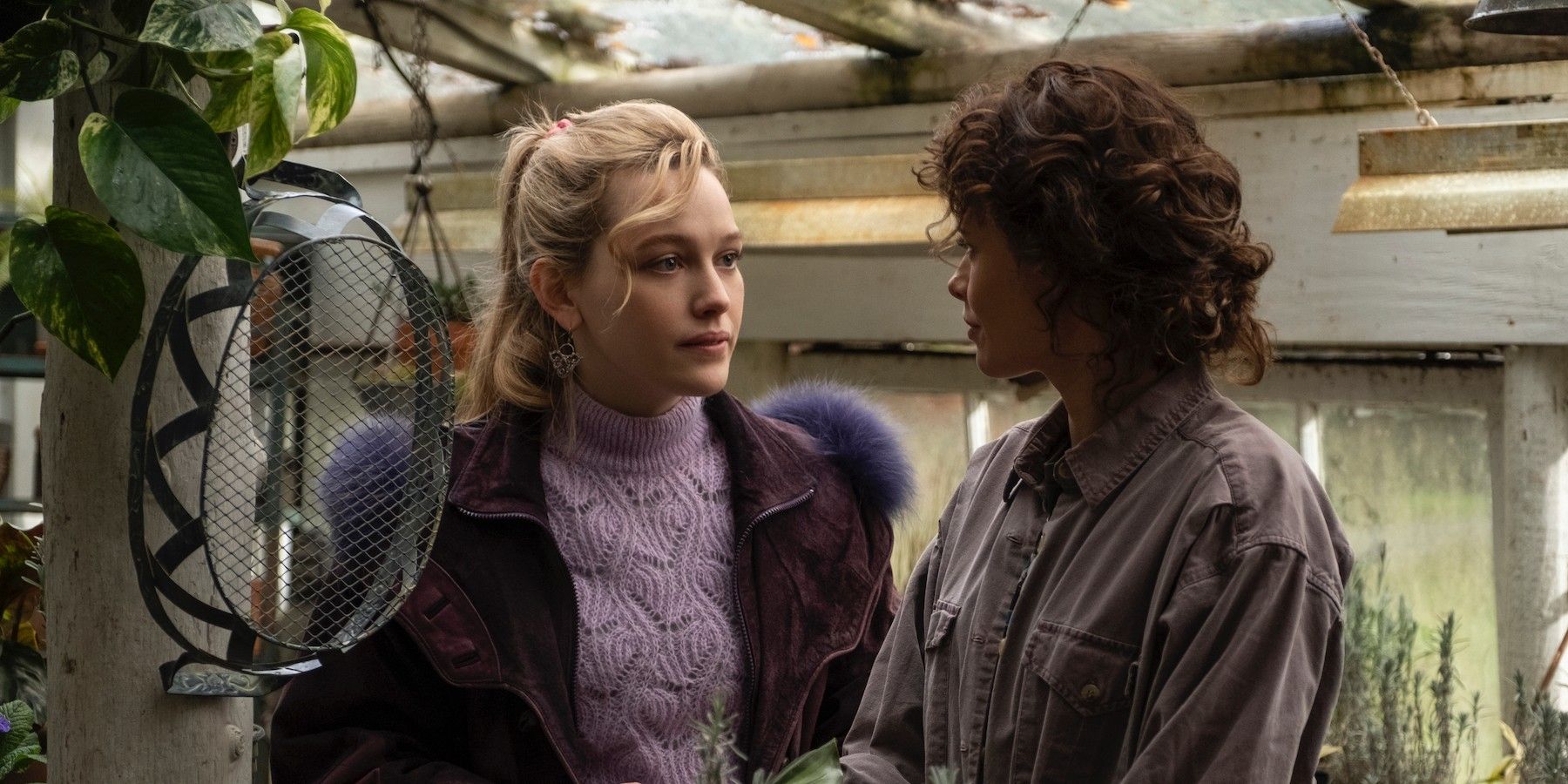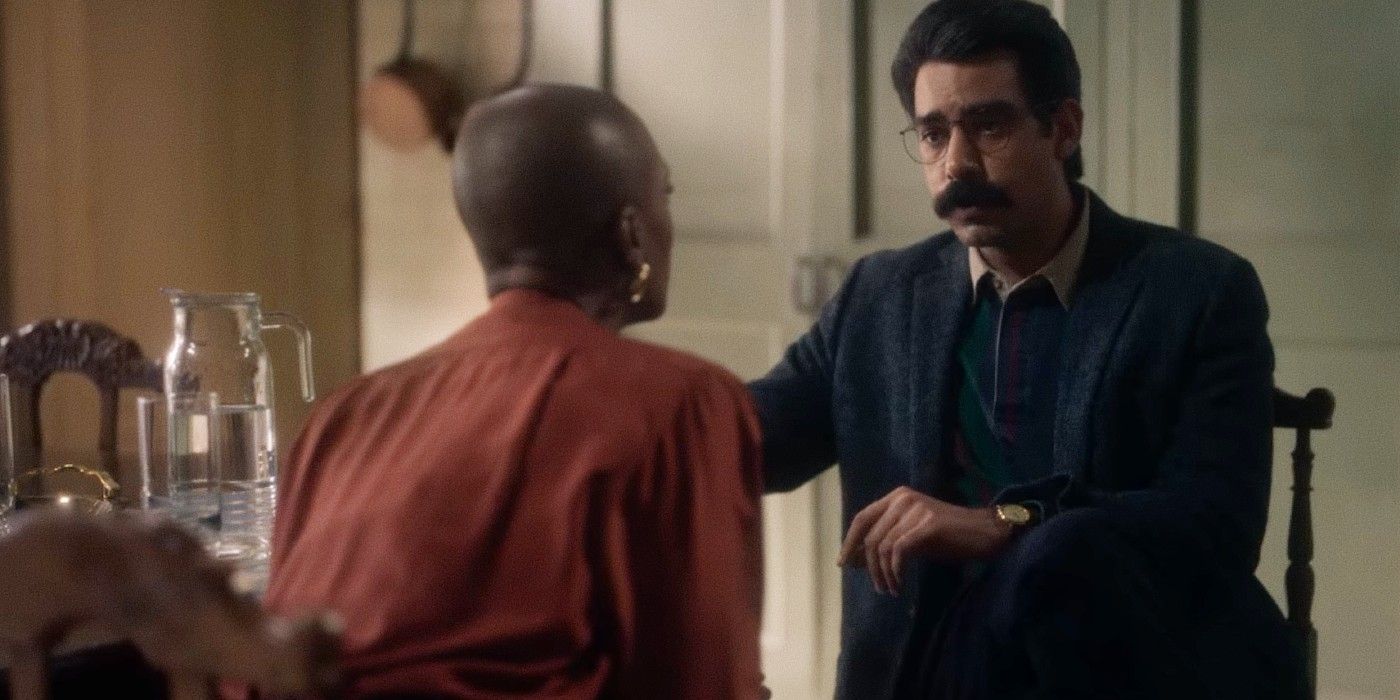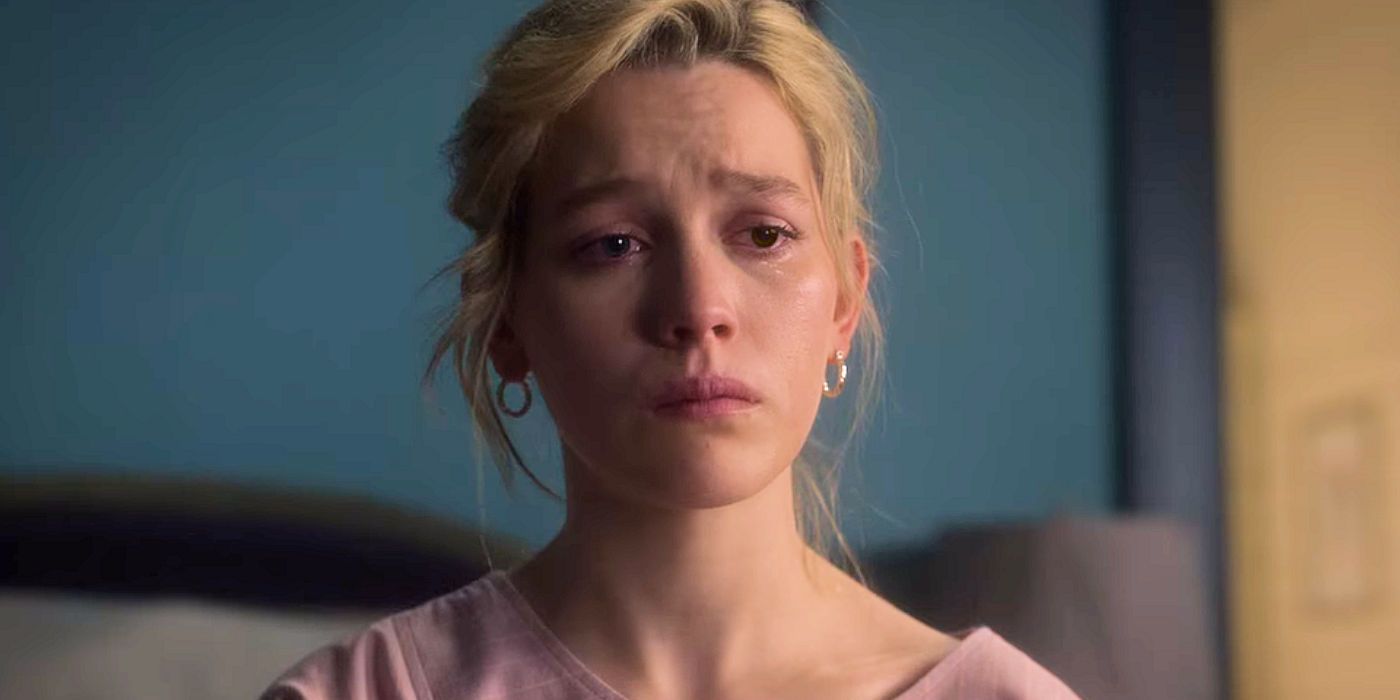
The Haunting of Bly Manor is a solid slice of small screen horror from The Haunting of Hill House creator Mike Flanagan, but the Netflix miniseries would have benefitted from giving romantic leads Dani and Jamie more time together. Released just in time for Halloween, The Haunting of Bly Manor is the follow-up to the critically adored 2018 Shirley Jackson adaptation, The Haunting of Hill House.
Like the earlier Netflix hit, Bly Manor takes a lot of liberties with the novella it is an ostensible adaptation of, Henry James’ The Turn of the Screw. However, one of The Haunting of Bly Manor’s biggest problems has little to do with the changes it makes to James’ story and more to do with who gets the most screen time. As solid as The Haunting of Bly Manor’s central romance is, the series would have been better if its core sweethearts, Dani and Jamie, got a little more time together both onscreen and off.
Much like Hill House, Bly Manor has an ambitiously large story to tell, and a sprawling cast of characters to introduce in its brief runtime. The show is centered around returning star Victoria Pedretti’s Dani, a young American living in London in an attempt to outrun the ghosts of her tragic past, and sees her take a job as the live-in au pair of two precocious, possibly possessed kids in the eponymous countryside manor house. What follows is all manner of spooky shenanigans and a lowborn romance for Dani, who falls for the house’s gardener, the working-class heroine Jamie. The two have superb chemistry and make for a great couple, but unfortunately, The Haunting of Bly Manor takes its sweet time bringing them together only to tear them apart all too soon, a decision which is unfortunate given how rare it is for horror media to depict queer romances. Keeping them together - or at least giving them more time together - and more thoroughly explaining Dani's death to make sense of it would have been a better route to take.

While there are issues with her eventual death too, Dani and Jamie’s romance deserved more focus from The Haunting of Bly Manor well before the final episode’s tragic denouement. Despite Dani being coded as a queer character and her flirting with Jamie as early as episode 3, the character has an entire episode devoted to her dead fiance’s tragic backstory, only to have her decades of happiness with Jamie condensed into a brief montage at the end of the final episode.
Dani and Jamie have superb chemistry, and despite the gardener only getting a short monologue in which she’s able to outline her backstory, both are well-rounded and fully realized characters. Aside from a single tryst midway through the series and a few tentative hand-holding sessions, The Haunting of Bly Manor devotes more screen time to explaining Viola's ghost than to the couple who are theoretically intended to be the central focus of the series. Viewers get an entire episode of backstory for the lady in the lake, half of which could have been used to speed up the story of Flora and Miles’ possession instead. This would have also allowed the show to devote Bly Manor’s entire final episode to Dani and Jamie’s life together.

With the bulk of The Haunting of Bly Manor’s action taking place over one summer and the last episode’s final ten minutes containing an entire decade and a half of Dani and Jamie’s life together, it’s clear that the pair could have gotten more screen time given how well they gelled and how pivotal they were to the story. All of The Haunting of Bly Manor’s couples struggled to get the screen time they deserved. Hannah and Owen’s chaste relationship was limited to a few conversations while Peter Quint and Rebecca Jessel got plenty of time to play out a Bonnie and Clyde-style forbidden romance, but no backstory to illustrate why Quint felt so hard-done-by due to his working-class upbringing and Jessel felt so isolated by her similar origins.
The Haunting of Bly Manor didn’t devote a lot of screen time to any of its couples, and while Dani and Jamie’s truncated love story may have been the most egregious case, the show would have benefitted from more context for Quint and Jessel’s affair and more content from Hannah and Owen instead of the focus given to Miles’ forgettable time in school and Henry’s predictable backstory, stellar as Henry Thomas’ acting-for-two undeniably is.

Ultimately, while The Haunting of Bly Manor could have explained Dani’s death well, the version viewers got doesn’t work. It’s a shame, as avoiding this twist would have given the creators another opportunity to give Dani and Jamie more time together. Not only was the protagonist’s years of happiness compressed into one ten-minute montage in the last episode’s last twenty minutes, thus reducing it to an afterthought, but the reasoning behind her death is also an internally inconsistent plot hole that falls apart if looked at too closely. Throughout the final few episodes of The Haunting of Bly Manor, the series makes it clear that a living character can be possessed by a ghost by inviting the ghost inside them. Said character is then “tucked away” in their memories until the ghost finishes using their body. To save Flora and Miles from Viola, the lady in the lake, Dani heroically sacrifices herself by letting Viola’s spirit possess her by repeating the words, "it's you, it's me, it's us".
Only Viola doesn’t tuck Dani away in her memories. Instead, she just sort of leaves everyone alone until she decides to return a decade or so later. There’s no clear explanation given for why Dani’s possession follows a different path from everyone else’s, and why she’s able to go an entire decade or more without hearing from the ghost inside her, which makes it all the more annoying that said ghost eventually denies her a happy ending with the love of her life. The rest of the Manor’s ghosts are freed from their fate of being stuck in the country house, so it’s strange that Viola isn’t also freed, but instead seems to take a holiday to America for a few years before dragging Dani back to England.
It’s a plot hole which could have been explained like the many ghosts of The Haunting of Bly Manor, but because it wasn’t clearly justified in-text, it makes the death of the show’s lead more frustrating when queer romances are already rare in horror media to begin with, and there’s very little grounding for Dani’s demise. The Haunting of Hill House also killed off a pair of interesting, engaging female characters in the form of Olivia and Nell, but as sad as these deaths were, they served a clear narrative purpose, however harrowing. As a result, for all the show's strengths, The Haunting of Bly Manor’s refusal to give Dani and Jamie happiness and freedom from a conventionally bleak ending feels less profoundly tragic and more predictably disappointing.
from ScreenRant - Feed https://ift.tt/356v7mg


0 Comments